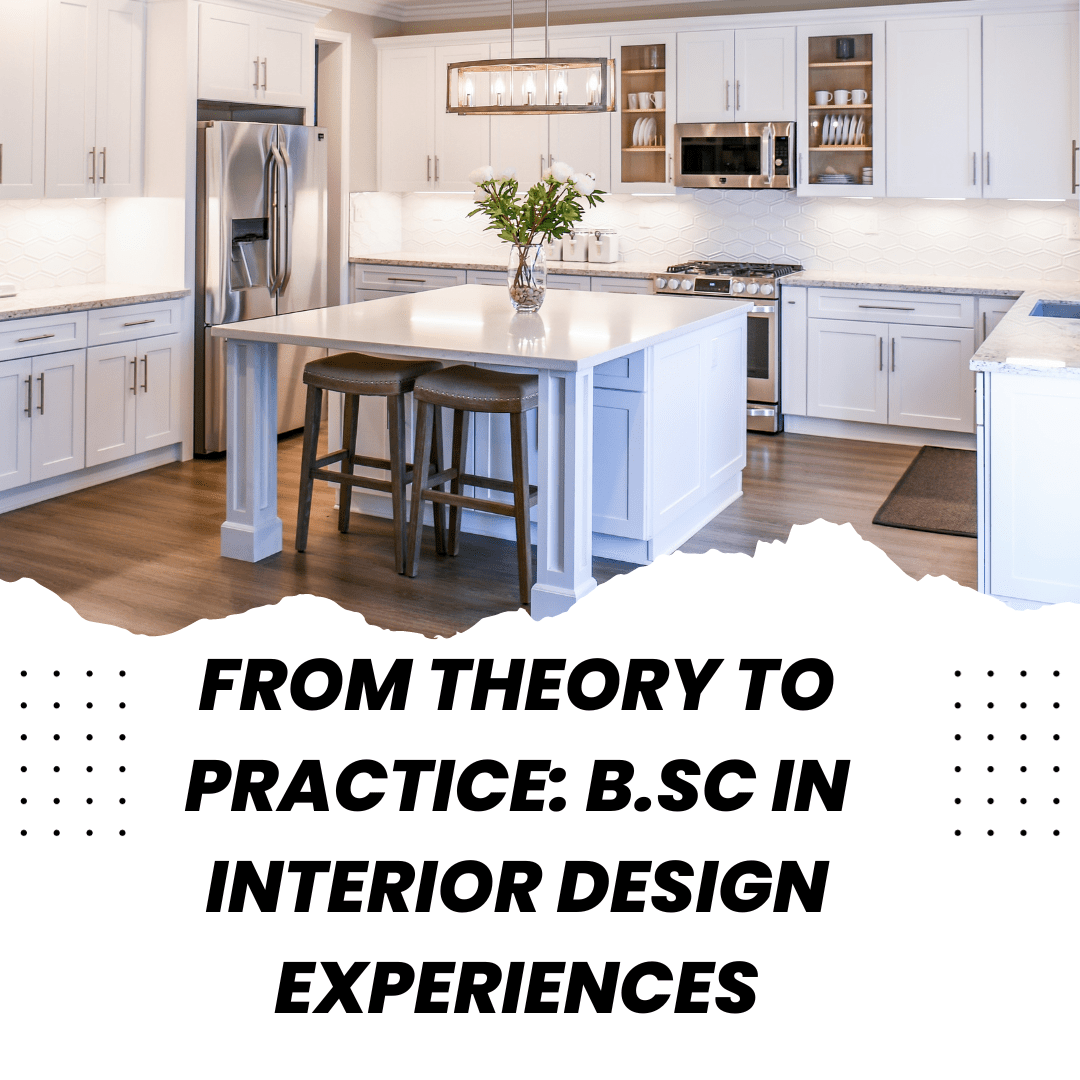Embarking on a journey in interior design is not just about mastering theories; it’s about translating them into tangible, aesthetic spaces. In this exploration, we delve into the transformative experiences that define pursuing a Bachelor of Science (B.Sc) in Interior Design. From classrooms to design studios, let’s uncover how theory seamlessly transitions to practice.
Bridging the Gap: The B.Sc Approach
1. Theoretical Foundations:
B.Sc in Interior Design programs begin with a robust foundation in design theories. Students delve into the principles of spatial aesthetics, color theory, and architectural elements, laying the groundwork for their creative endeavors.
2. Technology Integration:
With the evolving landscape of design technology, B.Sc programs ensure students are well-versed in the latest tools. From CAD software to virtual reality applications, the integration of technology is a vital component in bridging theory with practical applications.
Design Studios: Where Theory Takes Form
1. Hands-On Projects:
Design studios within B.Sc programs provide a playground for creativity. Students engage in hands-on projects, applying theoretical knowledge to create designs that respond to real-world challenges. This practical application enhances their problem-solving skills.
2. Collaborative Learning:
Design is often a collaborative process. B.Sc students work in teams, simulating the collaborative environment of the design industry. This fosters teamwork, communication skills, and the ability to integrate diverse perspectives into a cohesive design.
Field Experiences: Connecting with Reality
1. Internships and Industry Exposure:
B.Sc programs emphasize the importance of real-world exposure. Internships with design firms, site visits, and interactions with industry professionals offer students invaluable insights into the practical aspects of interior design.
2. Client Interaction:
Engaging with clients is a critical aspect of interior design. B.Sc students often have opportunities to interact with clients, understanding their needs and preferences. This experience refines their communication skills and hones their ability to translate client visions into reality.
Showcasing Creations: Exhibitions and Portfolios
1. Design Exhibitions:
Many B.Sc programs culminate in design exhibitions where students showcase their creations to a wider audience. This not only boosts confidence but also allows students to receive feedback from industry professionals and peers.
2. Building Portfolios:
B.Sc graduates exit their programs with a comprehensive portfolio showcasing their best works. These portfolios become powerful tools when entering the job market, providing tangible evidence of their ability to transform design theories into visually appealing and functional spaces.
Conclusion: Shaping Future Designers
The journey from theory to practice in B.Sc Interior Design programs is a dynamic and enriching experience. By immersing students in theoretical foundations, design studios, field experiences, and showcasing opportunities, these programs prepare future designers to navigate the complex and evolving world of interior design. If you’re considering a career where creativity meets practical application, a B.Sc in Interior Design might just be the transformative pathway you’re seeking.




